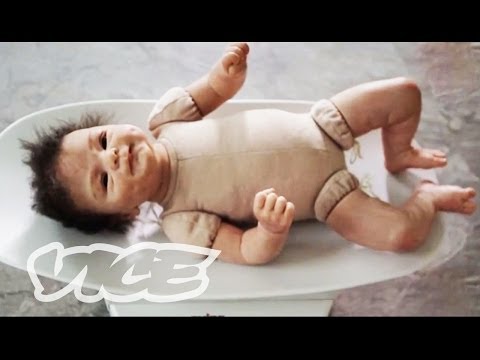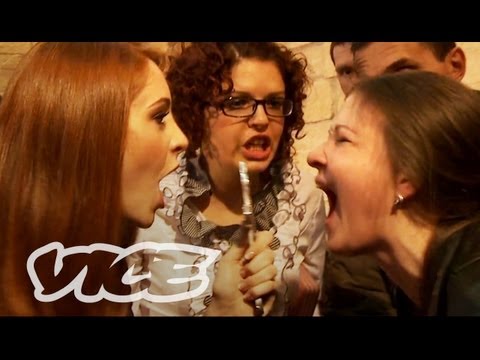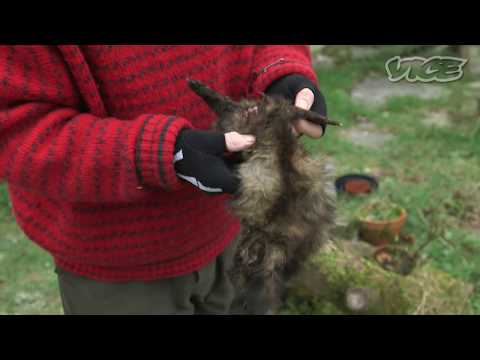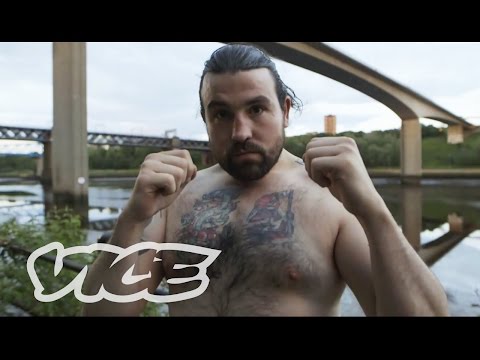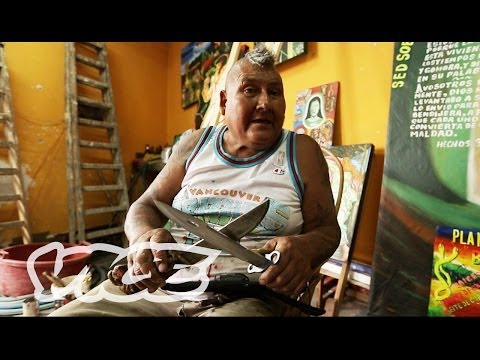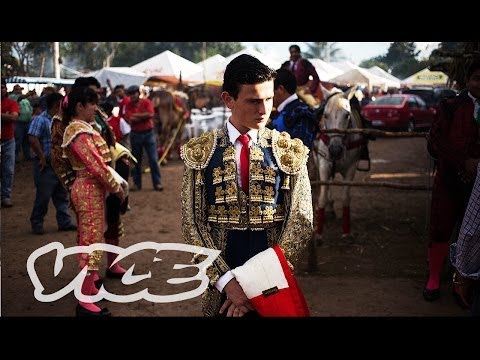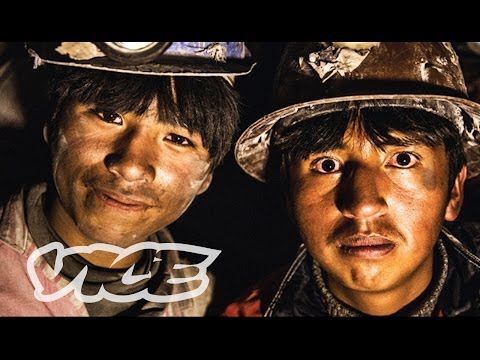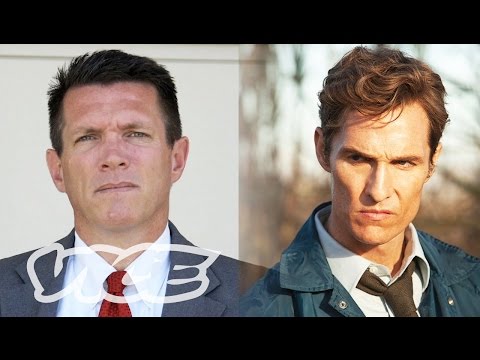Take these 10 documentaries, for instance. They cover everything from exorcisms to Chinese festivals. Some might pull at your heartstrings, while others will just make your skin crawl. Whatever the topic, at least one of these 10 films will leave you a little unsettled.
10Reborn Babies
Meet Anasha. She’s 54, married to a musician, and has four young kids with one on the way. If you want to get technical, Anasha is actually the one on the way . . . to pick up her new baby from the store. You see, Anasha’s kids aren’t real. They’re dolls, incredibly realistic dolls, complete with dimples, hair, and anatomically correct genitals. They’re eerie beyond belief. Watch this video on YouTube Shot smack-dab in the middle of the uncanny valley, Reborn Babies has about the creepiest dolls outside of Child’s Play. On second thought, Coco-Malu is scarier than Chucky, Annabelle, and Talky Tina combined. She’s the most popular doll in a series of toys made specifically for adults. These so-called “Reborn Babies” are designed to look just like the real deal, and oftentimes, they’re custom-ordered to replace an actual baby who’s died or grown up. The dolls come with voice modules so they can gurgle and cry. You can sprinkle each infant with a bottle of baby scent, and if you squeeze tight enough, you can even feel a heartbeat. Evidently, “Reborn Babies” are popular around the globe, but they aren’t collector’s pieces meant for glass cases. People treat these dolls like living, breathing human beings. Anasha cradles her dolls as she walks to the kitchen, lays them to sleep in a special crib, and keeps a closet full of cute outfits for her little darlings. In Anasha’s case, the dolls are her way of coping with reality. During the interview, she explains how she developed a metabolic disease that left her more or less crippled for three years. Frustrated and tired, she bought a “Reborn Baby” to cope with her illness. On top of that, Anasha is unable to have children of her own and strongly implies that she went through some unspecified trauma during childhood. So buyers suffer a messy stew of physical ailments and psychological issues. But is it harmless, or is it just plain weird? You could make a case that the mothers of “Reborn Babies” are deluding themselves, lost in a world of make-believe, acting like children who never grew up. Or maybe if these super-creepy dolls bring Anasha joy and help her get through the day, then who cares? Like her husband points out near the end of the film, she’d rather be happy than normal.
9Teenage Exorcists
Let’s set the scene. There are three beautiful girls with great hair and perfect makeup. Each one is armed with a bejeweled crucifix, and they’re preparing to do battle with the legions of hell. Sounds like the plot to some supernatural young adult novel, doesn’t it? It isn’t. And that woman screaming on the floor like she’s possessed by Pazuzu himself isn’t an actor. You’re watching an actual exorcism, courtesy of Brynne Larson and the Scherkenback sisters. Watch this video on YouTube Often compared to the heroes of Buffy the Vampire Slayer, the Teenage Exorcists are prodigies of Bob Larson, a would-be televangelist who specializes in spiritual warfare. The man even started his own international school of exorcism, if you’re interested. According to Larson (who is Brynne’s father), 50 percent of the world is demonically possessed. It’s really easy to wind up on the devil’s hit list. If you read Harry Potter, if you’re addicted to drugs, or if you were molested as a kid, you could end up as the next Regan McNeil. Heck, if you sleep with a prostitute, you might end up with a STD or sexually transmitted demon. You might think we’re being clever, but no. The interview subjects actually say that. While the teenage trio is based in Arizona, the documentary follows their trip across Ukraine, where a disturbing number of people flock to the Teenage Exorcists for help. Like all great hucksters, Larson and his team prey on the desperate. After the pastor whips the crowd into a frenzy, he calls people up to the stage, where he psychologically breaks them down until their demons reveal themselves. Then the girls show up, armed with crosses and Bibles, ready to cast the spirits out. Obviously, those who attend the exorcisms are victims of a shady scheme. But they’re not the only ones suffering here. The Teenage Exorcists are victims just as much as the people they’re praying over. The girls have grown up their entire lives under the heel of a con man. During the documentary, the teens seem completely sincere and totally brainwashed, and as the film progresses, we see the real villain here isn’t Satan. It’s Bob Larson—manipulator, control freak, and in need of some restraint.
8The Man Who Eats Roadkill
The folks at Vice certainly love their food. They even have a whole website and YouTube channel dedicated to eating and eating well. But the people at Vice also take a ghoulish delight in documenting gastronomical monstrosities. Take Shoenice22 Will Eat Anything for Fame, for example. It’s a short film about a YouTuber who’ll swallow anything, from toilet paper to tampons, and it’s incredibly gross and a little bit sad. Watch this video on YouTube The Man Who Eats Roadkill, on the other hand, is a slightly more macabre look at the weird world of freaky foodies. Our hero is Arthur Boyt, and at first glance, he seems like your stereotypical English eccentric who might pop up in a quirky BBC comedy. But when you see him don a pair of rubber gloves and skin a badger with a scalpel, well, it suddenly feels like you’re watching an episode of Hannibal. Not that Arthur Boyt would ever kill anyone—or anything for that matter. He believes killing animals for human consumption is wasteful. He’d rather just grab a dead pheasant on the side of the road and throw it in a stew. Arthur Boyt is a man who enjoys dining on roadkill, and if you can think of an animal that lives in Great Britain, chances are pretty good he’s already eaten it. He’s cooked everything from bats to barn owls. If you opened up his freezer, you’d find lizards and cats and even a buzzard. But while Boyt has eaten everything under the Sun, the man has a soft spot for badger. In fact, you could say Arthur is a badger connoisseur. Just like some people are experts on wine or cheese, Boyt enjoys giving lectures on the taste of badger penises or all the different textures you’ll find in a badger’s head. And like a TV chef with one crazy cooking show, he lets us know that badger casserole takes 3.5 hours to reach perfection. And truthfully, it looks pretty good . . . until he starts nibbling away at that skull.
7Getting High Injecting Snake Venom
Watching Steve Ludwin is like watching Timothy Treadwell come back to life. Both men are passionate about dangerous animals. They emanate enthusiasm, excitement, and an unsettling strain of naivete. And just like Treadwell, Ludwin might end up dead if he isn’t careful. While he isn’t hanging out with bears in the wilds of Alaska, Ludwin is taking some serious risks in the safety of his London flat. Watch this video on YouTube The man has injected himself with snake venom for over 20 years. An American expatriate with a fondness for reptiles, Ludwin owns an impressive collection of killer critters. His apartment is crawling with rattlesnakes, cobras, and vipers of every variety, all of which he milks by himself. Occasionally, he dilutes his deadly cocktails with water, but he isn’t afraid of injecting himself with straight-up venom either. If you’re wondering what it feels like, Ludwin describes it as pouring Tabasco on a wound. Inspired by famed herpetologist Bill Haast (who was so immune to venom that his blood saved 21 snake-bite victims), Ludwin believes his injections give him superhuman levels of energy and endurance. After shooting up, he waves in and out of traffic onscreen like a madman, and later, he’s flailing away at a heavy bag, claiming that the venom dulls his sense of pain. In fact, he thinks scientists might someday use venom as some sort of Captain America super-soldier serum. It’s true that scientists are researching snake venom’s medicinal properties, but Ludwin might be a little overoptimistic when it comes to his own self-immunization. Even though his big dream is to join up with a “forward-thinking” company and revolutionize the way people see snakes, Ludwin repeatedly admits he doesn’t really know what the venom is doing to his body. He even worries the toxins might cause his kidneys to fail someday. And when an acquaintance asks him if he could stop tomorrow, Ludwin says he’d love to quit someday . . . which sounds like something a junkie might say. Admittedly, Ludwin isn’t your average animal lover, but the hatred this guy gets in the comment section of YouTube is kind of ridiculous. If you want to see his reaction to all the haters, be sure to check out his response video.
6Underground Bare Knuckle Boxing In The UK
Described as a “thoroughly British blood sport,” bare-knuckle boxing has no time for wraps or gloves or the Marquis of Queensbury. This is a sport where men beat each other senseless using their raw, naked fists. You can hear the thud of bone on bone and see all sorts of fluid flying through the air. It’s a brutal game where men go home with swollen eyes, bulging lips, and mangled up hams for hands. Watch this video on YouTube But Underground Bare Knuckle Boxing in the UK is more than a freak show. It actually gives a poignant look at several key players in the bare-knuckle scene. First, we meet Andy Topliffe of B-Bad Promotions. He’s the Dana White of bare-knuckle boxing, a man trying to clean up the sport’s reputation and turn it into mainstream entertainment. There’s also James “Mr. Happy” Lambert, who, despite his cheerful nickname, provides a glimpse of the sadder side of the sport. Now a life coach, Lambert explains that the bare-knuckle game attracts angry young men trying to exorcise their demons by beating people to a pulp. Lambert knows because he used to be one of those guys until he traded his pugilistic prowess for a positive outlook on life. He’s even gone so far as to swear off punching heavy bags . . . because he’s afraid he might unleash his inner Hulk. However, the most interesting character is James “Gypsy Boy” McCrory, a real-life Mickey O’Neil. An Irish brawler with a heart of gold, McCrory finds himself defending the UK’s honor against a leaner, meaner challenger from the States. Boxing is an integral part of McCrory’s life, and you can’t help but root for him when he steps in the ring against Jason “The Machine Gun” Young. But despite his gregarious nature, there’s one question that catches McCrory off his guard. When reporter Clive Martin asks if he’s worried all this punishment will take a toll on his memory, McCrory goes quiet for a moment. Then he admits he’s already forgotten most of his past. It’s a painful moment, even worse than watching some big bald brawler getting knocked out cold.
5 From Psycho Killer To Painter
Once upon a time, Luis Orlando Cuevas Manchego was a notorious murderer. He made his living by holding up buses with machine guns and dynamite, and when he got sick of his abusive brother, he introduced his older sibling to a rather sharp axe. But that was all in the past. Today, instead of killing people on the streets, he kills them on a canvas. Watch this video on YouTube A big man covered in tattoos and scars, Manchego is full of so much crazy energy he makes Mike Tyson look like Mother Teresa. Known around Lima, Peru as “LU.CU.MA,” Manchego says he’s turned his life around with the help of God and art. He also wants to use his paintings to encourage others to abandon their criminal ways. “Art is cool, and art is powerful,” he says, “and with art, I share with a lot of people who want to hear how an outlaw can change.” Not only are his paintings “cool” and “powerful”—they’re also quite unique. One look around his workshop, and you can see he’s heavily influenced by his criminal past and Catholic faith. He’s also inspired by famous dictators, notorious terrorists, prison life, and corrupt politicians. His murals are full of Hitler-headed hydras, fiery-haired angels, and government officials getting devoured by snakes. Manchego is particularly proud of a painting where he’s stabbing ex-president Alan Garcia to death. Knives are a huge theme in LU.CU.MA’s work. He even carries a giant blade in case he needs to kill any thugs who might jump him, like the guy who allegedly tried to rape him once. Perhaps it’s just all that energy, but Manchego seems a little too proud of his war stories. Without a doubt, Manchego’s paintings are disturbing, but maybe this is a nonviolent way to channel his destructive impulses. Perhaps art really has curbed his psycho tendencies. It’s definitely earned the respect of his painterly peers. That painting of Alan Garcia is actually hanging in Lima’s National School of Fine Arts so if you visit Peru, be sure to check it out—and don’t say anything critical if LU.CU.MA is around.
4Child Bullfighters In Mexico
Michelito Lagravere is quite the record-setter. A local hero down in Yucatan, this Mexican teen was only six when he fought his first bull, making him the youngest matador in history. Admittedly, the match was pretty much just Lagravere swinging a cape while an angry calf tried to trample his muleta. But when Michelito turned 11, the bulls got bigger, and the bouts got bloodier. Watch this video on YouTube When Vice went down to Mexico, Michelito was 16 years old, still a minor, and still killing bulls. He estimates he’s fought thousands of animals and probably killed half of them. His brother, Andre, has donned his own pair of pink stockings and wants to make his own name as a teenage matador. The two train every day like a couple of football players, running up and down stadium seats, stretching back and forth, and rehearsing all their moves. Bullfighting is Michelito’s life, and it’s an important part of traditional Mexican culture. According to its defenders, the sport isn’t about bloodshed per se. It’s more about the ritual, one man facing a threat on behalf of his community. It’s a celebration of honor and bravery. If you think about it in the abstract for too long, it starts to sound noble and elegant. Seeing Michelito and Andre practice in the arena is almost like watching a pair of ballet dancers getting ready for their big performance. And then somebody sticks a bull with a sword, and it’s not so elegant anymore. Despite what animal rights activists say, defenders of bullfighting see the sport as part of their cultural inheritance, and that’s why many adults think children and teenagers should take part in the custom. By taking kids to watch the show—or encouraging children to participate—they’re preserving their way of life. Of course, that prompts an interesting question. Just because something is part of your cultural inheritance, does that mean it should be preserved? Or does society need to evolve and leave its more violent rituals behind? Perhaps it’s better for some traditions to fade away, and perhaps Michelito and Andre should just play ice hockey instead.
3Dining On Dogs In Yulin
Okay, animal lovers, if you thought the last video was bad, you might want to skip this one altogether. Right off the bat, we’re hit with the horrifying image of somebody roasting a dead dog with a blowtorch. It only gets worse, so abandon all hope ye who click play. Watch this video on YouTube Reporter Izzy Yeung finds herself in Yulin, a Chinese town getting ready to celebrate its annual Dog Meat Festival. Yes, it’s a holiday about chowing down on man’s best friend. While most of us view dogs as cute companions, the folks in Yulin see some dogs as delicacies. Perhaps more than any other documentary on this list, Dining on Dogs poses the difficult question, “Should we judge other cultures by our society’s standards?” Your answer probably depends on which part of the documentary you’re watching. In the second half, Yeung visits a small neighborhood celebration that feels like a backyard barbecue. All the neighbors drop by, people are drinking beer, and there’s a lot of dog meat on the grill. Really, at this point, it’s just a pile of steaming meat, no different from pork or chicken. And as one diner points out, Hindus would be horrified at the idea of eating steak, but Westerners eat beef all the time. How is eating dogs any different? It’s a good point, but the first half is so awful that it’s hard to think it over properly. When Yeung visits a meat market, it’s like entering canine hell. Multiple dogs are crammed into tight cages where they have literally no room to move. People carry the dogs by their necks, sometimes by nooses, and toss them into sacks so they can check their weight. Once the animals are sold, they’re skinned, roasted, and chopped to bits by a line of very dedicated butchers. Unlike the people in the documentary’s second part, these men and women aren’t all that friendly. They’re definitely defensive and offer all sorts of excuses for their shady (and in some cases downright illegal) businesses. One woman claims she’d end up a prostitute if she didn’t sell dogs. One guy says the dog trade helps China’s economy. And everyone is adamant that none of the dogs are kidnapped pets, not even the one that knows how to shake hands. At the end of the day, meat is meat, so maybe eating dog isn’t any different from eating a Big Mac. However, how our food gets to the table is a pretty big deal. If the citizens of Yulin want to keep their festival, perhaps they should do something about those markets.
2Bolivia’s Child Laborers
The concept of childhood doesn’t exist in Bolivia. Close to a million kids and teenagers there spend their days slaving away on the streets or down in the silver mines. Out of that million, half are under 14. While child labor is technically illegal, Bolivian kids actually have their own union which is an impressively powerful political machine. As we’ve read before, when the government tried to stop child labor, the Union of Child and Adolescence Workers rose in protest. So why do these kids want to work so badly? It’s not a question of want. It’s a question of need. “I mean, it would be nice, right?” asks one former child worker. “To live in a Disney-like world where everything is about fun and joy, but that’s not a reality.” Instead of playing sports or video games, Bolivian children work as bus announcers or balloon salesmen. Quite a few are ripped off by unscrupulous adults, and many are sacrificing their education to put food on the table. And that just creates a vicious cycle of illiterate adults who can’t get decent jobs, so their kids have to help out. Undoubtedly, the most shocking sequence takes place in a silver mine where we see a young teen crawling on his hands and knees through an ancient-looking tunnel. The walls are held up by rickety wooden beams, and as he chips away at the silver with hammer and chisel, dust and rocks crumble down from the roof. However, perhaps the saddest segment follows a brother and sister who work in a cemetery, polishing tombstones and setting out flowers. Even though the boy is only 13, he already sounds so tired and weary, especially when he explains his older brother committed suicide. Then he explains what happened to his coworkers. “There used to be more kids [working the cemetery],” he sadly explains. “Lots have begun to retire because of drugs and alcoholism.”
1The Real ‘True Detective?’
In early 2014, Nic Pizzolatto’s crime drama True Detective took the world by storm, earning praise from critics and audiences alike. The first season followed two detectives who spent 17 years chasing a serial killer across Louisiana. Of course, people were curious what inspired Pizzolatto, and his influences ranged from Robert W. Chambers to Eugene Thacker. Watch this video on YouTube He also mentioned something about “Satanism, preschool, and Louisiana.” Curious, Vice reporter Gianni Toboni did some digging and ended up in Ponchatoula, Louisiana where she discovered “the most bizarre case that any normal small town sheriff’s deputy . . . could ever imagine.” At first, Ponchatoula seems like an ordinary small Southern town. The people are friendly and laid-back, but behind that folksy veneer, Ponchatoula has its dark side, one that involves Satan, animal sacrifices, and pedophilia. The town’s epicenter of evil is the Hosanna Church. For a while, Hosanna offered your typical Sunday services, and then the new pastor showed up. His name was Louis Lamonica Jr., and there was something off about the guy. Worried and freaked out, the normal congregants took off, leaving behind a small band of radicals who committed some of the most disturbing crimes ever covered by Vice. But in addition to detailing some horribly unspeakable sex acts—complete with bloody baptisms, pentagrams, and Scriptures on the wall only visible under black light—the documentary also follows the three men who investigated and prosecuted the Hosanna officials. Most notably, the film focuses on Captain Stuart Murphy, the local detective who used some savvy interrogation techniques to get Hosanna’s youth pastor, Austin Bernard, to admit what happened inside the church’s youth room. But much like Matthew McConaughey’s character in True Detective, the case left Murphy with a cynical worldview. Now, he’s far more protective of his kids and has some interesting thoughts on solving crime. “What I don’t like about being a detective,” Murphy says, “is it seems like you never get a sense of accomplishment because there’s always more stuff to do tomorrow.” In other words, time is a flat circle. If you want, you can friend/follow Nolan on Facebook, or you can send him an email.
